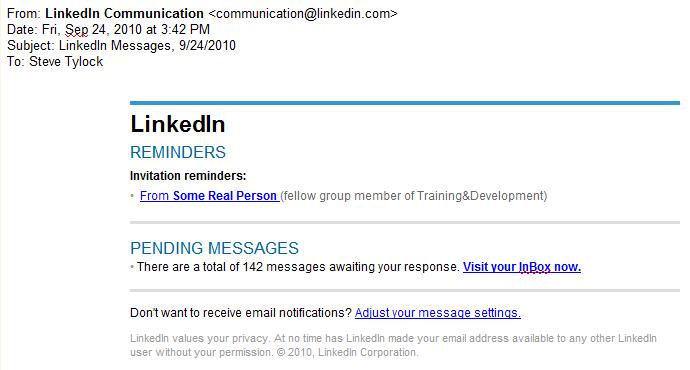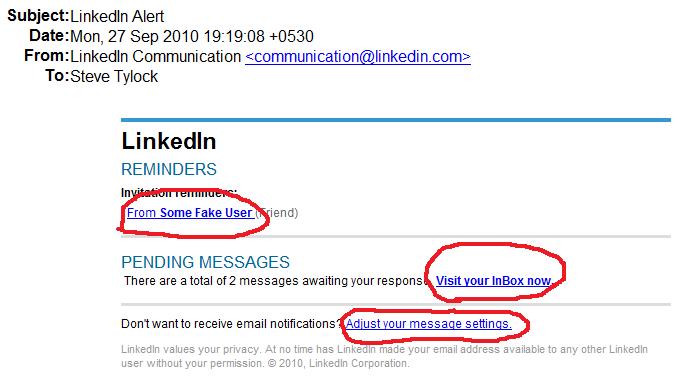Back in August we talked about fake LinkedIn email, and apparently the spamsters were listening in as they took that idea and ran with it.
Let’s dissect one instance of that sort of message so you understand what it looks like and what to watch out for.
It looks the same
So – you regularly get email from LinkedIn, right?
Well so does everyone else – and if you wanted to send a message that contained the same sort of layout as LinkedIn’s, you could simply copy every little bit of it, correct?
So let’s have a look at a real LinkedIn message:
Notice how the name of a real person you probably know is mentioned…
These links take you to LinkedIn.
The copy
And so the spammers think that you’ll click on that link because you accept connection requests with people you don’t know.
They send you a message that looks like this:
It’s the same font color and logo – but the links under those link-looking text portions (circled) don’t actually go to LinkedIn, they go to a bogus site.
When you hover over it, you generally see where it goes – and it is clear that it does not go to LinkedIn.
But otherwise – those email messages look identical…
On your toes
And that’s why you have to keep your wits about you – and avoid clicking on suspicious links (and keep a high degree of suspicion around these sorts of things…)
An easy way to keep out of trouble is use the notices as a reminder to login to LinkedIn – and you’ll see everything there. And then you can just read and delete the LinkedIn message.
Other ways to fool you
And yes, the spamsters are always trying to come up with other new ways to trick you, so don’t get lazy.
And if you detect a new angle to this sort of activity, please drop a note here or send me an email – I won’t blindly click your links, but I will check it out;-)
To your continued success,
steve
—
Steven Tylock
http://www.linkedinpersonaltrainer.com
http://www.linkedin.com/in/stevetylock


Eric has pointed out a new instance of this (June 2011). Yes it’s still an issue, yes you have to stay on your toes. No, you can’t do much about it except protect yourself.
The email is poorly faked, so the forgery is easier to spot.
AntiVirus software is still required for you PC though;-)
steve